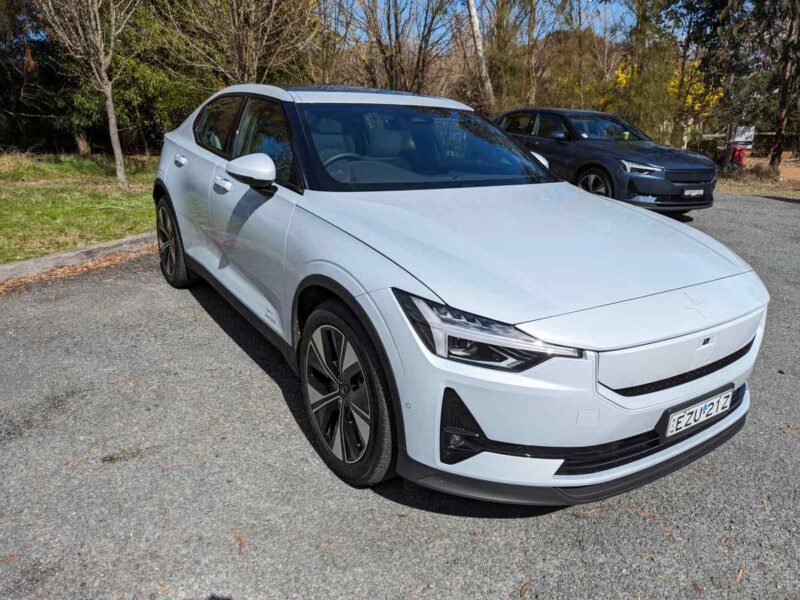Over 12 months ago, I drove a Polestar 2 from Sydney to Canberra on the way to the Australian EV Association conference. It was quite an experience and the car itself turned many heads in the nation’s capital.
Just over a year after that test drive, this week I found myself in the same city, test-driving the newly refreshed Polestar 2, the MY 24, which now offers a bigger battery in some variants, longer range, and a sporty feel – and a bigger asking price.
The idea behind the upgrades is to get more out of less. Polestar says the Polestar 2 can now travel up to 22% further, consume up to 9% less energy, and charge up to 34% faster, thanks to hardware upgrades including larger batteries and new motors.
That means, however, a higher price tag. While prices for many EVs are falling, Polestar 2 MY24 are more expensive – an extra $3,500 for the base model and $2,400 for the top of the range model. This table below shows how the costs – before on roads – grade higher with each added feature.
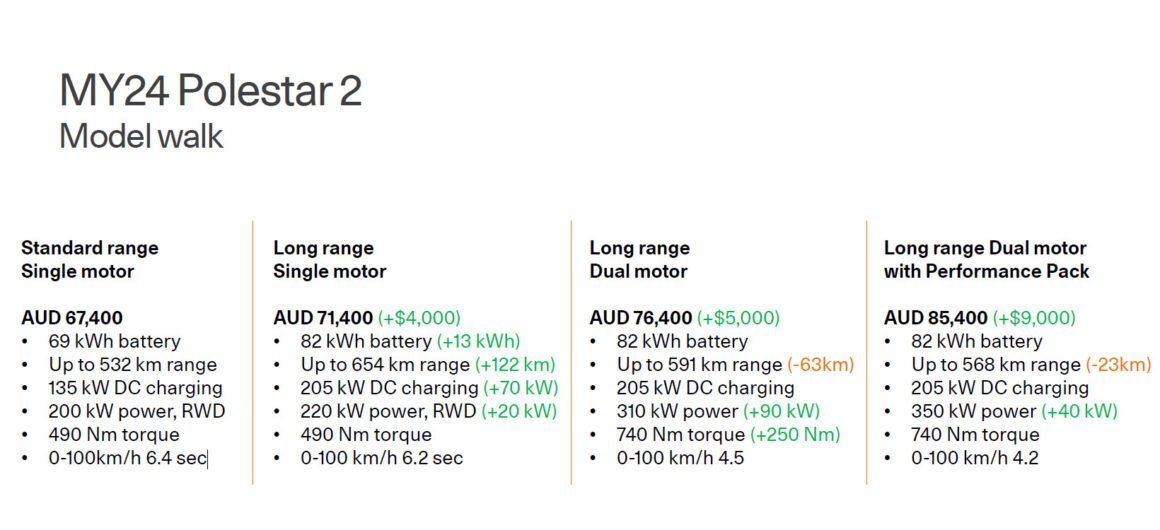
Polestar entered the Australian market about 18 months ago and has so far delivered sales of more than 3,000 Polestar 2 EVs. Globally Polestar has produced its 150,000th car, which is a huge achievement for an EV maker in its first three years.
Here are some of my takeaways from driving the refreshed Polestar 2 around Canberra and regional NSW.
Classy exterior styling
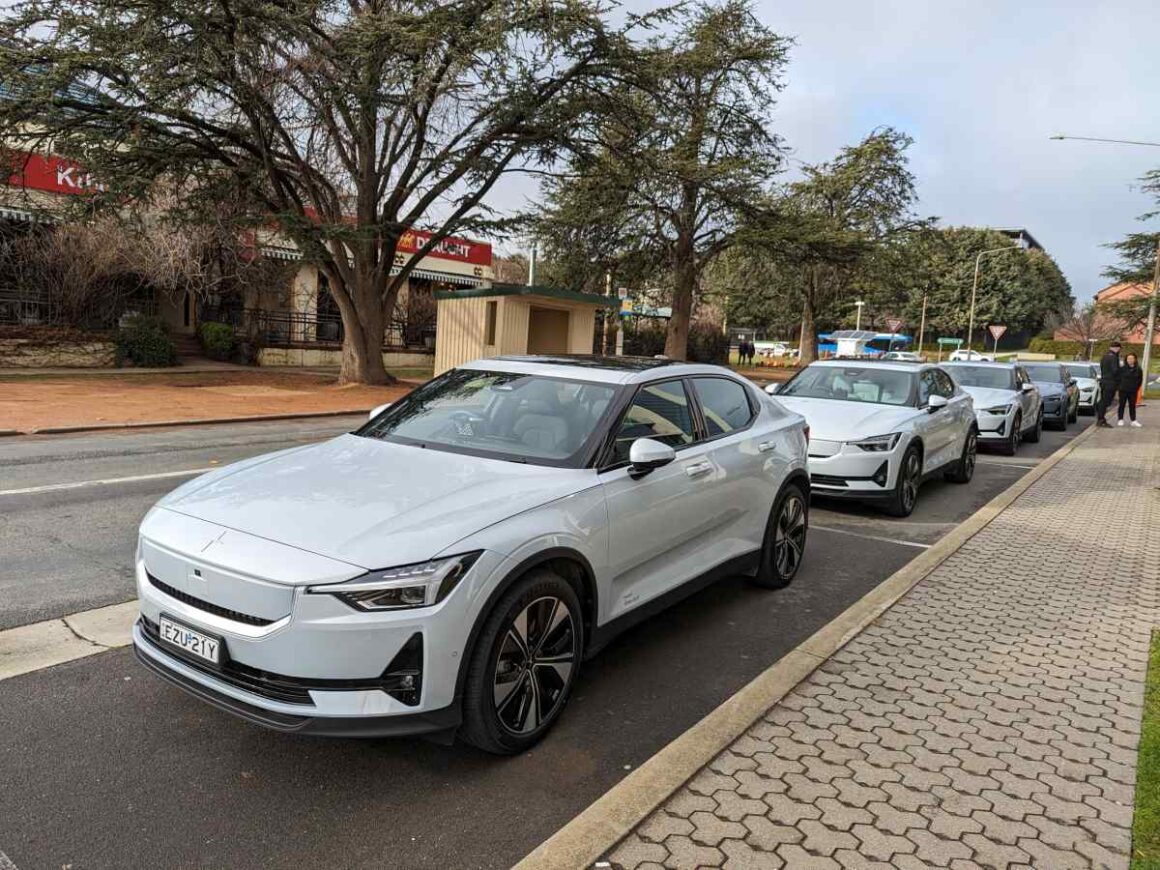
One of the most obvious parts of the Polestar 2 refresh is the front grill, which has been replaced by a smoother design with just the front camera opening on display.
From the side, it updated model looks similar to the previous generation car. Michelin tyres add to the feeling of sportiness and efficiency in the refreshed model.
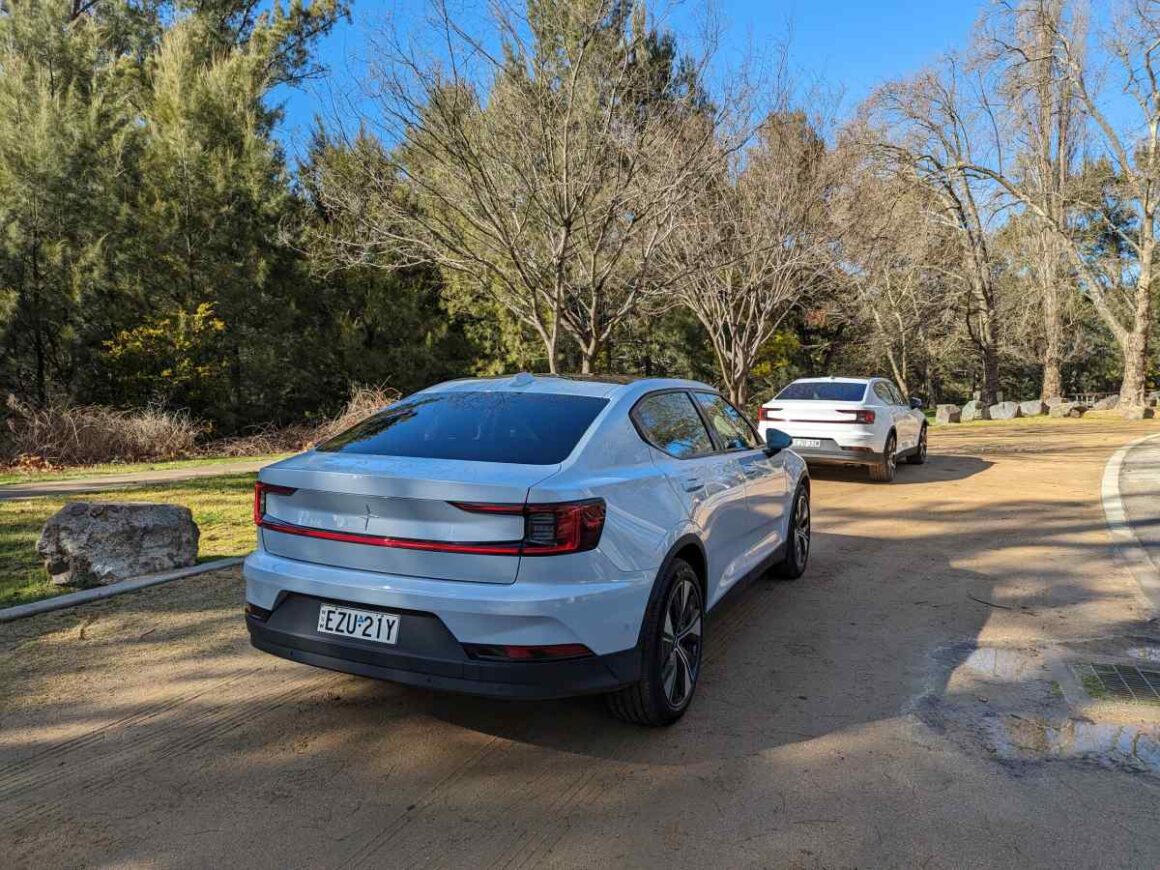
On the inside, it is clear to see that the level of premium feel from the previous model continues. Whether it’s the solid “thunk” of the door closing after you get into the driver’s seat, or the key which still holds a very stylish minimalistic look.
The choice of materials in the cabin makes it a really nice space to be in for both the driver and passengers. The driver-focused centre console and the gear shifter do provide a very special feel when shifting from Park to Drive.
With the key in your pocket or inside the car, shifting the car from into drive is seamless and the car is ready to take off as soon as you press the accelerator.
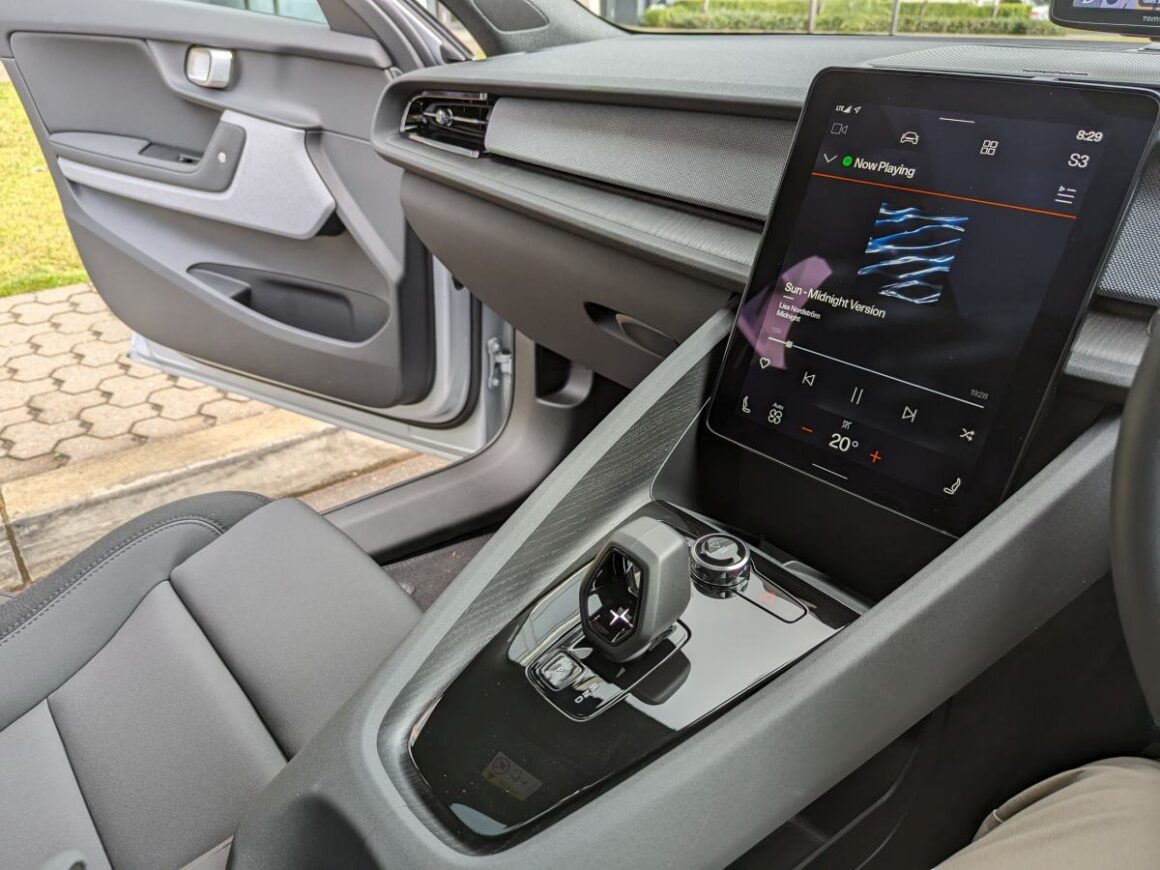
But it’s the drive experience that is the big change year. It’s just in the longer range, which is pretty significant – but also in the feel of the drive.
I drove the base variant, which has had its motor moved from the front to the back. That is a big change, and it seems worth the extra cost.
Having motors on the rear for the single-motor variant – rather than the front in the earlier version – is not such a big deal in a straight-line but moving out of the city streets and onto curvy mountain roads, the refreshed model comes into its own with its sporty drive.
The new car feels well-planted on the road as it drives into corners and hairpins. Being rear-wheel drive, the torque steer is almost gone in the refreshed model which gives further confidence on the road.
This combined with the suspension setup on offer makes it a fun car on the road, absorbing bumps and rougher mountain road surfaces with ease.
The larger battery packs in the long-range variants, and the improved efficiency have also delivered a significant increase in range.
The single-motor long range variant now gets up to 654 km of WLTP range which is a bump up of 103 km over the previous model. Even the standard-range car now gets 54 km of additional range, bringing the range figure up to 532 km.

Riz is the founder of carloop based in Melbourne, specialising in Australian EV data, insight reports and trends. He is a mechanical engineer who spent the first 7 years of his career building transport infrastructure before starting carloop. He has a passion for cars, particularly EVs and wants to help reduce transport emissions in Australia. He currently drives a red Tesla Model 3.

